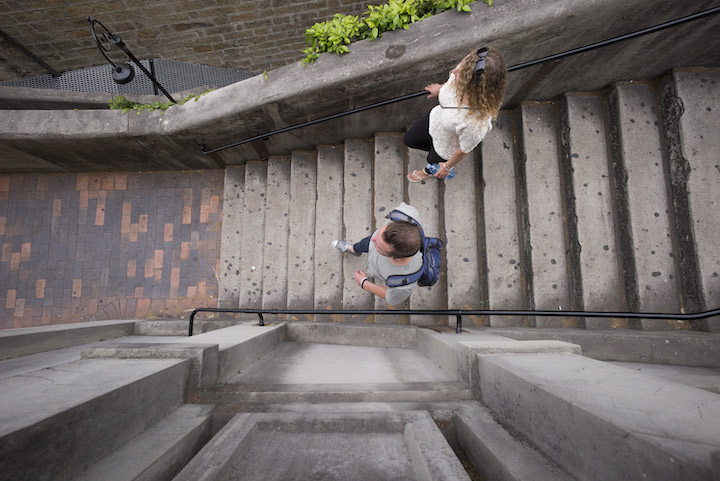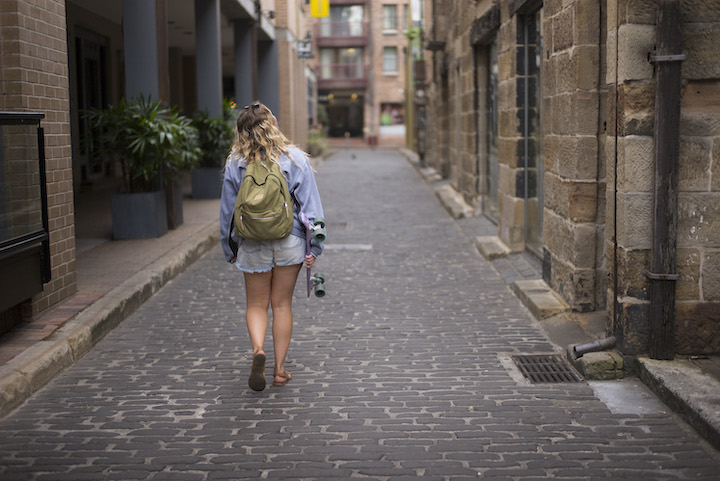Exploring Sydney: What to do in The Rocks
Convict History of The Rocks
There are almost a dozen old historic pubs in The Rocks, and they pretty much all offer good beer, fine food and lots of atmosphere. It doesn’t really matter where you pick to stop for a brew, you’ll be in for a good time.
It wasn’t always like that, though. In times past, you had to be very careful where you drank in The Rocks. You certainly wouldn't pick the Hero of Waterloo, where rumours of secret tunnels connecting the pub to the Harbour told of unfortunate drinkers being clapped in irons and bundled onto ships. Or the Whalers Arms Hotel where, according to urban legend, beer was brewed on-site using water drawn from a well in the backyard. When the patrons complained that the beer here tasted a bit off, the publican drained the well to find the decomposing body of a 'lady of the night' at the bottom.
It’s stories like these that transform one of the most colourful suburbs of Sydney into one huge (free) outdoor museum. You can’t help but get a real sense of living history as you wander around the back alleys and laneways, and down concave steps worn by the passing of countless feet. Modern day shiny Sydney may be a mere musket shot away, but here is another world – one where the past seems not that far away at all. You can still see the old pulleys on former bond stores, foundations of the old workers' cottages and the remains of public latrines built into the very rock face that gave the suburb its name.
Until late last century, when the galleries and sourvenir shops sprang up and the area became a gentrified tourist destination, it was long seen as a hotbed of vice, renowned for its debauchery, brothels, drunken sailors and other unsavoury characters. By 1900, the authorities viewed The Rocks as an overcrowded slum, and they used an outbreak of bubonic plague (that actually only killed 3 people) to begin to clear the area. These days, the pendulum is swinging the other way, with historians discovering remnants of social and economic life, including the excavation on the site under YHA Sydney Harbour, which prove the locals enjoyed rich and colourful lives, and a better standard of living that originally thought.

These are just some of the stories you’ll learn at the Rocks Discovery Museum, a fantastic free museum in a restored 1850s sandstone warehouse, as well as the nearby Justice and Police Museum, housed in the old police and court building near Circular Quay and where the old cells, courtroom, prisoner docks and spiked gates are all still there. The Justice and Police Museum usually has interesting, if not downright quirky exhibitions on show, but what really makes it so wonderfully chilling is its array of confiscated weapons and forensic photographs of past crimes and bygone villains – most of which were put together in 1910 as part of a collection used to instruct new constables in the wicked ways of the local criminals.
Life in The Rocks was certainly tough, and that was a prevailing theme for nearly its entire history. On Gloucester Street there is a row of four tiny terrace houses and a corner shop built in 1844 which were home to more than 100 families over 150 years, right up until 1990 – quite astounding given the primitive and cramped conditions. It’s now a museum – Susannah Place; and the one-hour guided tour, coupled with its oral histories, bring the life and times of the tenants alive.
But one of the things that really sets The Rocks apart from most tourist precincts in other cities around the world is that real, everyday people still live here. Take a walk down to Millers Point and you’ll see many of the terrace houses that were saved from demolition by the Green Bans in the 1970s, and despite being on some of the most expensive real estate in Sydney, every brick bears testament to their rich history – even today.
The thing peolpe really love about The Rocks are its many free (or really cheap) attractions. It means you can spend two or three days here and not get bored – or run out of cash.
Sydney Observatory (currently being refurbished, but returning in 2023) on the hill behind Cumberland Street is one example. Built in 1858, Australia’s oldest observatory was a working one until the 1970s when increasing light pollution made observations too difficult. It is now a museum, but the telescope very much still works. Highlights include the Cadi Eora birrung, which looks at Sydney’s stars from an Aboriginal perspective and the Transit of Venus, which back in 1769 was one of the main reasons Captain Cook set sail from the other side of the world after observing the transit in Tahiti.
Just next door is the SH Ervin Gallery. Run by the National Trust, this gallery is all about Australian art. Once you've had your fill there, head down along the western shore of the point to the old finger wharves of Walsh Bay, where you can follow the history of the area and the people who worked and lived there through the story boards and artefacts on display. Juxtaposed against all this gritty industrial heritage is a modern sculpture trail with supersized bright art installations from some of Australia’s best known artists, including Brett Whiteley. My favourite, though is Jimmie Durham’s Still Life with Stone & Car, an iconic crumpled red Ford Festiva with a huge boulder sitting on top of it, left seemingly abandoned in the middle of a roundabout.

Head back towards Circular Quay through The Argyle Cut, a tunnel through the sandstone ridge built by convicts in chain gangs, and poke your nose into Cadmans Cottage, a two-story 1816 era dwelling that is one of the oldest buildings in city. The Museum of Contemporary Art (MCA) is just next door, and it’s also free and well worth spending an hour or two perusing its halls. And don’t forget Government House over in the Botanic Gardens – they have free guided tours every half hour. When it was built, it was the most sophisticated example of Gothic Revival architecture in the colony, and as you would expect, inside it houses a grand collection of classic Australian antiques and art. What you might not expect to find is the stunning collection of contemporary glass art and modern furniture mixed in with the old.
But the best bargain of all has to be a walk across the Harbour Bridge. It will cost you almost $200 to climb its metal spans to the peak, but crossing on foot via the pedestrian walkway is free, and the south-east pylon provides some excellent views of the Harbour. It also features exhibitions on the history and construction of the bridge, which was officially opened in 1932 and at the time was a serious feat of engineering. As the accounts of the time go, the ribbon was cut by a dashing mounted guardsmen who appeared out of nowhere brandishing a sword, much to the consternation of the Premier and other officials. He was likely a comparative nobody, but who says you have to be rich to enjoy the best of Sydney Harbour?
Looking for somewhere to stay? Stay in style at the award-winning YHA Sydney Harbour, located right in the heart The Rocks and featuring spectacular views of the Harbour.
Deals for you
We’ve partnered with businesses across Australia to bring you great deals and discounts on activities and attractions.





